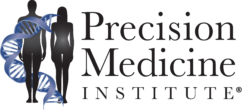Physicians may be able to predict risk of heart disease by analyzing individual’s voice patterns during telehealth encounters
Imagine if a person’s risk for heart complications could be determined simply by listening to that patient’s voice. Researchers at the Mayo Clinic may have found a way to do exactly that and their unique, precision medicine approach to evaluating heart health could one day be applied in telehealth and other remote care delivery methods as a cardiac screening tool.
In a long-term study led by cardiovascular disease specialist Jaskanwal Deep Singh Sara, MD, the Mayo Clinic researchers showed that an individual’s risk of heart problems caused by clogged arteries can be determined solely by using an artificial intelligence (AI) analysis of their voice.
For their study, the researchers recruited over 100 patients to provide voice samples. The study participants were asked to provide three 30-second voice samples: one from a prepared script, and two speaking freely with one focusing on a positive experience and one on a negative.
The scientists then used an AI-algorithm to analyze the recordings for more than 80 different vocal features, such as:
- frequency,
- amplitude,
- pitch, and
- cadence.
Israeli start-up Vocalis Health provided Mayo Clinic with the AI-algorithm for study, which was “trained” to recognize distinct voice features using a database of more than 10,000 voice samples.
“We can’t hear these particular features ourselves,” said Sara in an American College of Cardiology (ACC) news release. “This technology is using machine learning to quantify something that isn’t easily quantifiable for us using our human brains and our human ears.”
The Mayo Clinic researchers published their findings in the journal Mayo Clinic Proceedings, titled, “Noninvasive Voice Biomarker Is Associated with Incident Coronary Artery Disease Events at Follow-up.”
Identifying Disease with Patient’s Voice During Telemedicine Consults
Previous studies using Vocalis Health’s algorithm had indicated a possible link between six different voice features and risk of coronary artery disease (CAD), a condition that causes a buildup of plaque in the heart’s arteries and leads to heart attacks.
The Mayo Clinic researchers combined these six features into a single score that they then used to assign individual risk scores to each patient in the study. One-third of the patients were considered high-risk using this score, while two-thirds were considered low risk. The study participants were then tracked for a two-year period.
Of all the participants, over half (58.3%) in the high-score group went to the hospital for chest pain or for a heart attack in the two years they were tracked. Only about half that percentage (30.6%) in the low-score group experienced a similar event.
Ultimately, researchers showed that high-score patients were 2.6 times more likely to experience major problems normally connected with CAD and three time more likely to show evidence of coronary artery plaque buildup in medical tests.
Sara noted that this research could potentially be applied to telemedicine consults, allowing for screening during remote interactions.
“Telemedicine is non-invasive, cost-effective, and efficient and has become increasingly important during the pandemic,” he explained.
“We’re not suggesting that voice analysis technology would replace doctors or replace existing methods of healthcare delivery, but we think there’s a huge opportunity for voice technology to act as an adjunct to existing strategies. Providing a voice sample is very intuitive and even enjoyable for patients, and it could become a scalable means for us to enhance patient management,” Sara added.
Combining Voice Technologies with Genomics
Research into how individual speech patterns can predict the presence of disease is still very much in its early days; however, these types of studies are also showing promise in other areas. Parkinson’s disease has been known to cause a soft, monotonous voice, and research into this neurological condition has recently led to a new advance that may combine voice-based technologies with genomics.
University of Arizona researchers recently found a link between a Parkinson’s gene and vocalization. The scientists found that an overabundance of a protein called alpha-synuclein caused by an overactive gene was a potential cause of vocal changes and tested this theory using zebra finches. The songbirds that were given a copy of the overactive gene associated with Parkinson’s disease developed short, monotonous songs as a result.
The results of this study, published in PLOS ONE, demonstrate that vocal changes are not only connected to certain disease states, but also that these changes are related to distinct physical processes. By researching how vocal changes are caused by disease states, clinicians may gain a deeper understanding of the disease process, while also acquiring new tools to detect diseases earlier.
“It’s definitely an exciting field, but there’s still a lot of work to be done,” Sara said of the Mayo Clinic team’s research into how CAD and vocalization are connected. “We have to know the limitations of the data we have, and we need to conduct more studies in more diverse populations, larger trials, and more prospective studies like this one.”
It’s unlikely healthcare providers will be using voice-based screening tools anytime soon. Nevertheless, healthcare leaders will benefit from awareness into how this relatively nascent field of research is progressing. As recent technological advances demonstrate, personalized treatments based on individual voice patterns may one day become a reality.
—Caleb Williams
Related Information:
Noninvasive Voice Biomarker Is Associated with Incident Coronary Artery Disease Events at Follow-up
Speaking from the Heart: Could Your Voice Reveal Your Heart Health?
Researchers Find Link Between Parkinson’s Gene and Vocal Issues That Could Lead to Earlier Diagnosis
